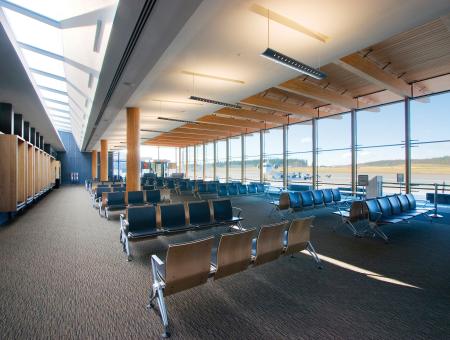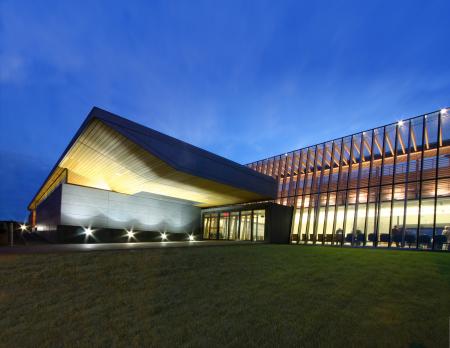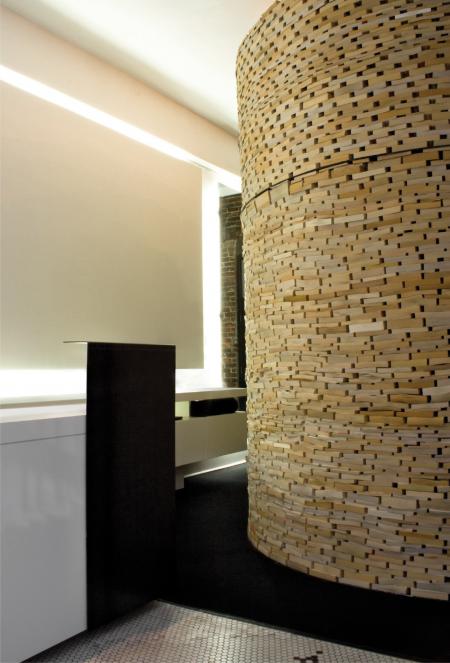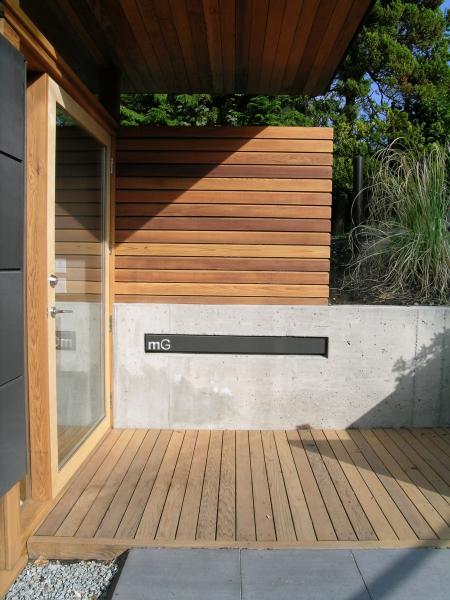Michael Green says ...
"Fundamentally, our job as architects is to make people’s lives happier, and that’s a lot easier to do with wood. As a carpenter and mill worker first; architect second; I have a strong connection with wood as a building material. Although timber’s environmental performance is the main driver for me these days, there are many other attributes of wood that appeal to designers and builders.
Above all, wood is beautiful. It is warm and welcoming. Because it is a natural material, and people like to touch it, we can use it to create buildings that people enjoy being in. Since we showed the power of wood at Prince George Airport in British Columbia – how the community and travellers responded to it – we have had many requests to do similar work, including the opportunity to design the extension at Ottawa Airport. The warmth that comes off the façade there is incredible."

Passenger Lounge, Prince George Airport, British Columbia
"Wood keeps the workers happier too. We used industrial-grade glulam in the baggage handling area because it is much more comfortable in cold weather. Wood does not conduct the cold like steel does and it is less prone to condensation. In other applications, such as residential developments, wood’s advantages include its thermal mass and acoustic mass, meeting residents’ needs for comfort and privacy.
What amazes me is that all these advantages come at a lower cost, because there is no need to cover structural timber to make a beautiful space. It’s exciting to design airports, stadiums and other long span spaces in wood. It’s an opportunity to create an expressive structure that is both beautiful and unique."

Entrance, Prince George Airport, British Columbia
"Builders love wood because it is easy to work with, and building users love wood because it makes them feel at home; like they belong. I believe we all want to stay in touch with the past, but in a modern way. Forgotten materials, such as wood, bamboo, masonry and earth, are being revived. Recycled materials resonate in a world weary of too much waste. I think that was part of the reason we won an International Interior Design Association award in 2010 for the washroom/change room in the LYNNsteven retail store in Vancouver, Canada. The structure is the world’s tallest architectural cylinder made entirely of paperback books."

Paperback book cylinder that serves as change room at LYNNsteven retail store in Vancouver, Canada
"At mgb, we include timber elements in all our buildings, and we use wood as much as possible. It is no longer a challenge to convince clients to build in wood. They come to us now because they love what wood can do. Getting in early on this momentum shift to wood has been of huge benefit to our business. It’s fun and financially rewarding."

The entrance to mgb’s office in Vancouver, Canada, showcasing exterior applications of timber
Biography
Michael Green, Principal, McFarlane Green Biggar Architecture (http://www.mgb-architecture.ca) feels a strong connection with wood, even though he was born and raised ‘north of the tree line’ in a remote community on Canada’s Hudson Bay. Based in Vancouver, Michael designs buildings, public art, interiors, landscapes and urban environments around the world. His buildings range from simple houses to international airports, and all incorporate innovative timber elements. Michael believes that the integrity of the architecture profession is to build with modesty, simplicity and maturity. He is committed to achieving professional excellence through living a balanced and generous life, and is happiest when his designs are quiet and modest, and make other people’s lives happier.
